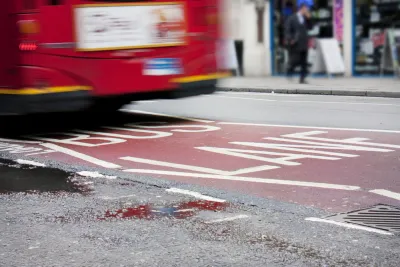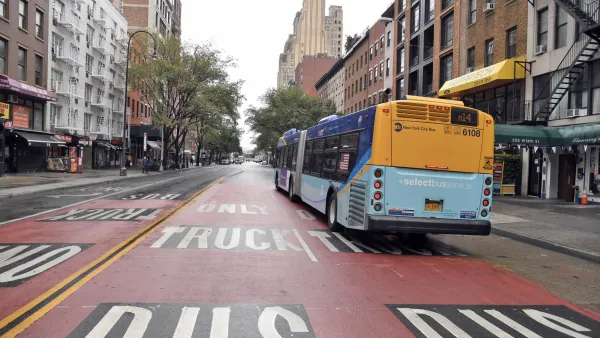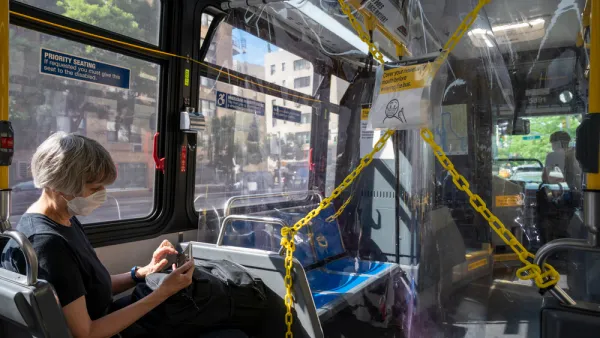As cities streamline approval processes for bus-only lanes during the pandemic, transit experts hope the projects will lead to lasting change.

In a discussion hosted by TransitCenter on the efficacy of bus lanes installed during the COVID-19 pandemic, transportation professionals weighed in on the need for continued and improved bus service and the effects of the pandemic on transit systems across the country.
The pandemic only highlighted existing inequities in transit systems. While trains tend to serve white-collar workers who have largely shifted to working from home, buses remain a crucial lifeline for essential workers, many of whom are low-income and depend on buses to access jobs. During the pandemic, train ridership in Chicago dropped by 80%, while bus ridership stayed essentially the same.
To take advantage of lighter traffic and improve the efficiency of bus systems, some cities have fast-tracked bus lane projects this year, with Boston adding 14 miles of bus lanes in 2020. By reducing barriers to bus lane projects and implementing quick, temporary solutions, cities can improve traffic in the short term and gain support for making bus lanes permanent in the future as travel picks back up and users see the benefits of more efficient transit service.
FULL STORY: How have pandemic bus lanes worked out in Chicago, Boston, and SF?

National Parks Layoffs Will Cause Communities to Lose Billions
Thousands of essential park workers were laid off this week, just before the busy spring break season.

Retro-silient?: America’s First “Eco-burb,” The Woodlands Turns 50
A master-planned community north of Houston offers lessons on green infrastructure and resilient design, but falls short of its founder’s lofty affordability and walkability goals.

Delivering for America Plan Will Downgrade Mail Service in at Least 49.5 Percent of Zip Codes
Republican and Democrat lawmakers criticize the plan for its disproportionate negative impact on rural communities.

Test News Post 1
This is a summary

Test News Headline 46
Test for the image on the front page.

Balancing Bombs and Butterflies: How the National Guard Protects a Rare Species
The National Guard at Fort Indiantown Gap uses GIS technology and land management strategies to balance military training with conservation efforts, ensuring the survival of the rare eastern regal fritillary butterfly.
Urban Design for Planners 1: Software Tools
This six-course series explores essential urban design concepts using open source software and equips planners with the tools they need to participate fully in the urban design process.
Planning for Universal Design
Learn the tools for implementing Universal Design in planning regulations.
EMC Planning Group, Inc.
Planetizen
Planetizen
Mpact (formerly Rail~Volution)
Great Falls Development Authority, Inc.
HUDs Office of Policy Development and Research
NYU Wagner Graduate School of Public Service





























